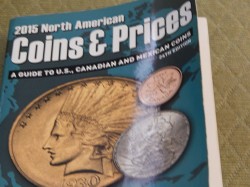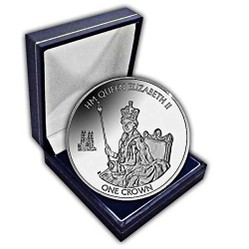Canadian province tokens and coins exist, but only for some provinces. Those provinces that did have coins or tokens ceased having them minted when the province for which they were being made joined the confederation currently known as Canada.
To understand why province coins eventually became unnecessary to produce requires we understand the confederation that grew into Canada as it is today. Initially, on July 1, 1867, three British provinces of Canada, Nova Scotia, and New Brunswick joined together. The Province of Canada split into two provinces, Quebec and Ontario. These four provinces united and took the name Canada. Manitoba was added in 1870. British Columbia joined the confederation in 1871, and Prince Edward Island joined in 1873. To this core Saskatchewan and Alberta later joined the confederation, then Newfoundland eventually joined in 1949.













 The Linear Equation and Related Equations and Inequalitieson 08/15/2024
The Linear Equation and Related Equations and Inequalitieson 08/15/2024
 Understanding Calculus: A Simplified Approach to Derivativeson 08/05/2024
Understanding Calculus: A Simplified Approach to Derivativeson 08/05/2024
 Limits: Vital Building Blocks of Calculuson 08/01/2024
Limits: Vital Building Blocks of Calculuson 08/01/2024
 Mardi Gras Collectibleson 02/02/2023
Mardi Gras Collectibleson 02/02/2023



Comments
Some of the provinces did not exist as provinces before becoming part of the confederation. They were part of territorial regions of what is now Canada.
blackspanielgallery, Thank you for practical information, pretty pictures and product lines.
Your very first sentence, about not all provinces having coins and tokens, and your information under the Prince Edward Island subheading, particularly intrigue me.
Would some provinces not have needed coins and tokens because barter was in effect?
And would the Spanish and Colonial Spanish eight-reales silver pieces have been circulated as they were? Or would they have to be altered somewhat to indicate their different associations and values (something on the order of a post-it ;-D saying "I am now a five-shilling piece")?
Absolutely fascinating to learn things. Knowledge is empowering . Ty
One thing I came across in researching one province is there was a request to England for coins that was denied by Parliament, but an order with Heaton Mint in Birmingham was still made. There seems to be a rebellious undertone here, An unofficial coin, not technically money, would have to be called a token. I only covered what the provinces issues, there were bank tokens as well. There was a Coinage Act in England that made a difference.
While I did not go through Canadian history thoroughly, the reason Canada became a confederation and not a republic is the U.S. had just had the Civil War, and Canada did not want such a possibility, so a different form of union was made.
I suppose in a sense these coins and tokens were not that different from British tribal coins that I covered in another article.
BSG
FASCINATING work. Thank you.
You have made me realise how little I know about Canada and its origins. the coins and token origins are totally new to me. The videos were very helpful too.